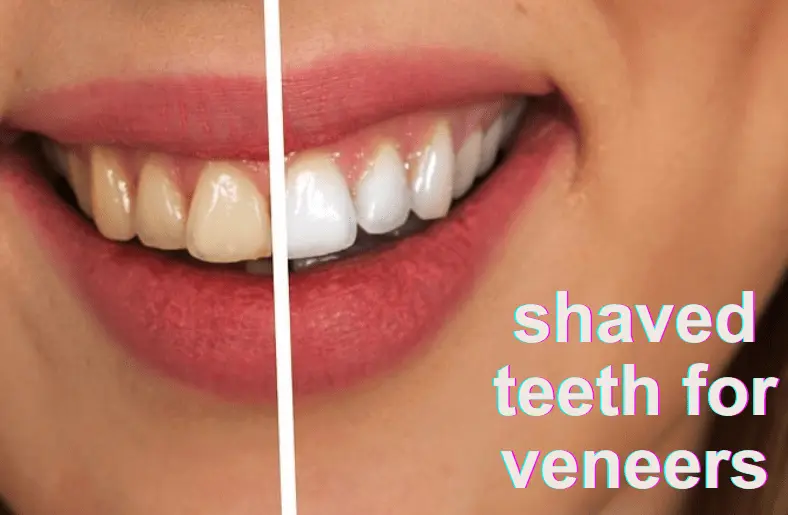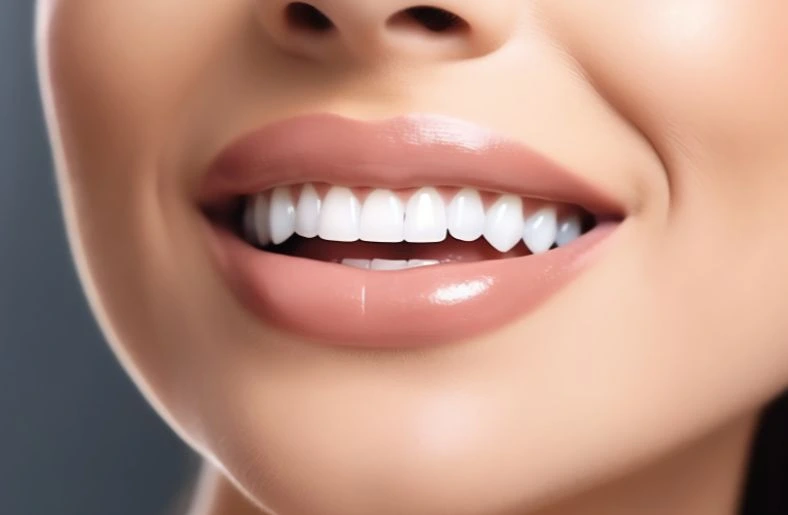Considering veneers? Heard of “shaved teeth for veneers”? Well, it’s a common dental procedure. Many people seek a perfect smile. Consequently, veneers have become popular. They effectively cover imperfections such as gaps, stains, and uneven teeth. But, you might wonder, what about shaving teeth? Is it painful? Well, let’s explore further. Modern techniques ensure minimal shaving. Generally pain-free, sometimes no shaving is needed at all. Therefore, in this article, we’ll delve into everything you need to know about veneers. By the end, you’ll have a clear understanding. Then, you can decide if veneers are the right choice for you. So, let’s dive right in, shall we?
What Are Veneers?
Veneers are thin, precisely crafted shells that are intended to cover your teeth’s front surface. They are typically made of porcelain or composite resin, materials that closely mimic natural tooth enamel, making veneers look very realistic. Veneers address a range of dental issues, such as hiding discolored, chipped, or cracked teeth. They also correct minor misalignments and fill gaps between teeth, providing a comprehensive solution for many common dental imperfections.
The procedure for getting veneers is relatively straightforward. Traditional veneers may require shaving a thin layer of enamel to ensure a perfect fit, while no-prep veneers need little to no shaving, making them a less invasive option. Porcelain veneers are particularly durable, lasting between 10 to 15 years, whereas composite veneers might last 5 to 7 years. Both types are stain-resistant, ensuring long-lasting results. Veneers not only enhance your smile quickly but also boost your confidence, offering a beautiful, natural-looking smile with minimal hassle.
The Process of Getting Veneers
The process of getting veneers is straightforward but involves multiple steps. Your dentist will first schedule a consultation with you to go over your objectives. The dentist will examine your teeth and might take X-rays. Next, if traditional veneers are chosen, a thin layer of enamel is shaved off your teeth. This creates space for the veneers. Then, impressions of your teeth are taken to craft custom veneers. The veneers are created using these impressions in a dental lab. This process usually takes a few weeks. Once the veneers are ready, you’ll return to the dentist. The dentist will clean your teeth and bond the veneers in place with a special adhesive. Finally, the dentist will make any necessary adjustments to ensure a perfect fit. The result is a beautiful, natural-looking smile.
Is Shaving Teeth Necessary
Shaving teeth is often necessary for traditional veneers, but not always. It depends on your dental needs. Traditional veneers require enamel removal. This makes room for the veneers. Removing enamel also ensures a secure fit. However, advancements in dentistry offer alternatives. No-prep veneers, like Lumineers, don’t need shaving. These veneers are ultra-thin. They fit over your natural teeth without enamel removal. Each option has pros and cons. Traditional veneers provide better customization. They can correct severe issues. No-prep veneers are less invasive. They are suitable for minor adjustments. Consult your dentist to decide. They will recommend the best option for your smile.
Does the Shaving Process, Hurt
The shaving process for veneers typically doesn’t hurt. Local anesthetic is used by dentists to numb the area. This ensures you feel no pain. Most patients report only mild discomfort. The amount of enamel removed is minimal. Dentists remove just enough to fit the veneers. This process is quick and precise. Afterward, you might feel sensitivity. This is normal and temporary. If you choose no-prep veneers, there’s no need for shaving. These options avoid the discomfort entirely. Always discuss concerns with your dentist. They will make sure you’re comfortable and explain the procedure.
Benefits of Shaved Teeth for Veneers
Enhanced Aesthetic Appearance: Shaving teeth for veneers allows for a customized fit, ensuring that the veneers closely mimic the natural shape and contour of your teeth. This customization results in a seamless and natural-looking smile transformation.
Improved Durability: By shaving a small amount of enamel from the teeth, the veneers can adhere more securely, leading to increased durability and longevity of the restoration. This means that the veneers are less likely to come loose or detach over time.
Corrects Minor Dental Flaws: Shaving teeth for veneers can address various minor dental imperfections, including chips, cracks, and uneven surfaces. By preparing the teeth, the veneers can effectively conceal these flaws, resulting in a more uniform and aesthetically pleasing smile.
Protection of Underlying Tooth Structure: Veneers not only enhance the appearance of the teeth but also provide an additional layer of protection for the underlying tooth structure. This can help prevent further damage and decay, ultimately promoting better oral health in the long term.
Long-lasting Results: With proper care and maintenance, veneers placed on shaved teeth can offer long-lasting results, allowing individuals to enjoy their beautiful smiles for many years to come.
Potential Risks and Considerations
When contemplating veneers, it’s important to recognize the potential risks associated with the procedure. One of the primary considerations is tooth sensitivity, which can arise following the removal of enamel during the preparation phase. This sensitivity may manifest as discomfort or pain when consuming hot or cold foods and beverages. Additionally, there’s a risk of veneer detachment if the bonding process is not properly executed or if there are underlying issues such as tooth decay. This detachment can result in the need for rebonding or even replacement of the veneers. Moreover, while veneers are known for their durability, they are not indestructible. There is a possibility of veneer damage, such as chipping or cracking, particularly if the individual engages in habits like teeth grinding or biting into hard objects. Furthermore, some individuals may experience gum irritation or inflammation following the placement of veneers.
Caring for Your Veneers
Caring for your veneers is crucial to keep them looking great and lasting long. Regularly brush and floss to maintain cleanliness and prevent plaque buildup. Choose a gentle toothpaste and a soft-bristled brush to avoid scratching your veneers. Don’t skip dental check-ups; they help monitor veneer health and detect issues early. Be cautious of habits that could harm your veneers, like biting hard objects or grinding teeth. Steer clear of overly hard or sticky foods that might damage or dislodge your veneers. Consider using a mouthguard for activities that could impact your teeth, such as sports. Following these steps ensures your veneers stay flawless for years.
Conclusion
In conclusion, veneers represent a remarkable option for enhancing your smile. Transitioning from initial considerations, it’s evident that they offer numerous benefits. Additionally, they provide durability, natural aesthetics, and versatility. Furthermore, when weighing potential risks, it’s essential to recognize the transformative potential they hold. Ultimately, they offer a significant boost in confidence and dental appearance. Thus, considering all aspects, it’s clear that veneers are a valuable investment in one’s oral health and overall well-being.




